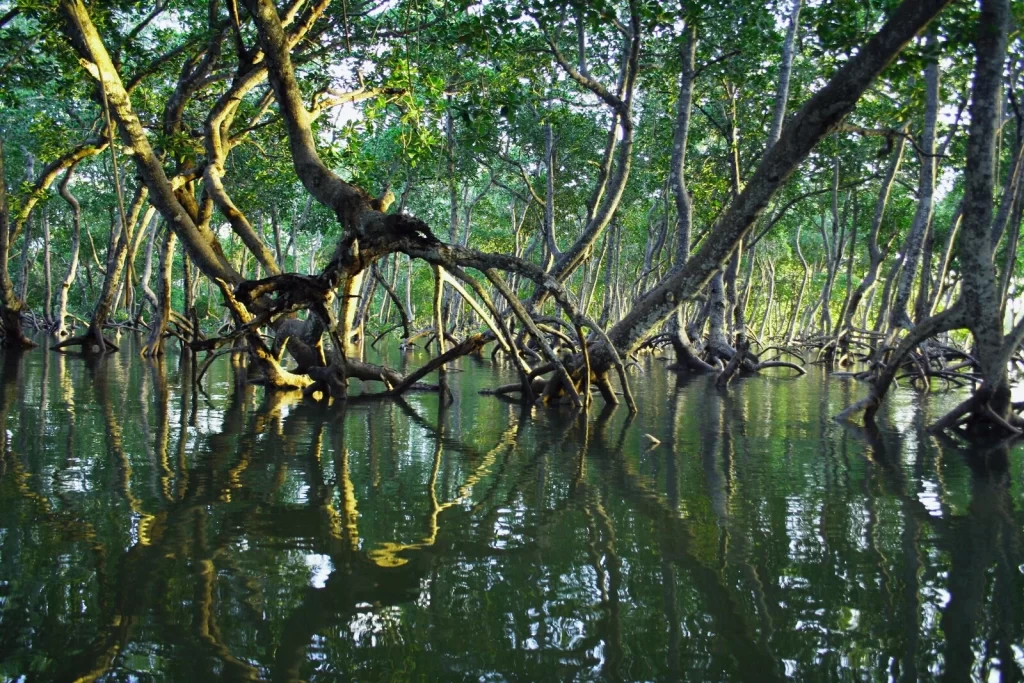With a little more than 905 thousand hectares, Mexico is the fourth country with the largest area of mangroves in the world, second only to Indonesia, Australia and Brazil.
According to information from Mexican BiodiversityIn Mexico's 17 coastal states, this ecosystem is present. By 2020, the five states of the Sea of Cortés Region 181,036 hectares, 20% of the country's total area, but this figure represents a loss of more than 6,000 hectares in the last five years.
Unfortunately, this is not a regional trend. Since 1980, when there were 18.8 million hectares of wetlands in the world, the area of these ecosystems has been reduced to 15.2 million, making their restoration and protection vital.
Protect the mangroves is crucial for a variety of reasons, ranging from the biodiversity conservation to the mitigation of climate change. Here are seven key reasons why it's important to protect these valuable coastal ecosystems found in tropical and subtropical regions.
- Biodiversity: Mangroves are habitats rich in biodiversity. Many species of fish, crustaceans, and mollusks use mangroves as breeding, nursery, and feeding grounds. In addition, mangroves provide refuge for numerous species of birds, mammals and reptiles.
- Coastal protection: Mangroves act as natural barriers that protect coastlines against storms, hurricanes and storm surges. Their dense roots and thickets help reduce soil erosion and stabilize the coastline.
- Carbon cycle: Mangroves play an important role in the carbon cycle. They store large amounts of carbon in their sediments and biomass, helping to mitigate climate change by absorbing and storing atmospheric carbon dioxide.
- Sustainable fishing: Many communities depend on mangroves for sustainable fisheries. Mangroves serve as natural nurseries for fish and other marine species, contributing to food security and local livelihoods.
- Water filtration: Mangrove roots and substrates act as natural filters, helping to improve water quality by trapping sediments and nutrients before they reach coral reefs and other marine ecosystems.
- Tourism and recreation: Mangroves are popular tourist destinations and offer opportunities for recreational activities such as kayaking, bird watching, and eco-tourism. This can contribute to the local economy and raise awareness about the importance of conserving these ecosystems.
- Adaptation to climate change: Given their ability to withstand adverse conditions, such as high salinities and flooding, mangroves play a crucial role in the adaptation of coastal communities to climate change.
The conservation of these ecosystems is essential for maintaining the valuable ecosystem services to guarantee the quality of the sustainability of the communities that depend on them. The degradation of mangroveseither due to the deforestationthe contamination or the climate changecan have negative consequences for biodiversity and the resilience of coastal ecosystems.
Actions to protect mangroves
Within the framework of the COP27in Egypt, Global Mangrove Alliance and the United Nations High-Level Climate Champions launched Mangrove BreakthroughThe project, a groundbreaking initiative that seeks to unlock $4 billion and protect 15 million hectares worldwide by 2030.
World Economic Forum emphasizes that Mangrove Breakthrough brings together governments, non-governmental organizations (NGOs) and funders to work collectively on four objectives.
- Reduce to zero the net loss of mangroves caused by direct human action
Coastal development, aquaculture expansion, and overexploitation have caused mangrove forest cover to decline by 30% to 50% over the past half century. Although recent trends show that mangrove loss is slowing, we must accelerate collective action to reduce it to zero.
- Restore mangroves to cover at least half of all recent losses
Mangrove restoration requires an integrated, nature-based approach to help mitigate climate change and enhance coastal resilience. While it is not possible to reverse all mangrove loss, it is estimated that a total of 818,300 hectares of mangrove forest lost between 1996 and 2020 can be restored. Mangrove Breakthrough aims to restore half of these losses, totaling 409,150 hectares by 2030, at a rate of 51,000 hectares per year.
- Ensure that long-term protection increases from 40% to 80% of the remaining mangroves.
While 41% of the world's mangroves are in protected areas, Mangrove Breakthrough seeks to protect an additional 6.1 million 100 thousand hectares. This could include both traditional protected areas and more inclusive approaches to indigenous land management and sustainable use areas that protect mangroves from logging and conversion.
- Ensure sustainable financing for the extension of existing mangroves.
Mangrove Breakthrough will leverage capital from public, private and philanthropic sources to maintain and sustain the existing 14.7 million acre coverage. The annual maintenance costs to protect the mangrove ecosystems have been estimated at approximately US$25 per hectare.
To achieve these four targets, approximately US$4.07 billion is needed through 2030, with an annual investment of US$630 million. Meeting these targets could sequester up to 43.5 million tons of CO2 in mangrove biomass and an additional 189 million tons of CO2 in soil.
"COP28 will provide a valuable opportunity to scale up Mangrove Breakthrough's objectives and put nature at the center of the climate agenda," said Razan Al Mubarak, senior UN climate change advocate for COP28.
The key to achieving the objectives of Mangrove Breakthrough will be to strengthen the strategic partnerships between governments, public and private financial institutions, NGOs and philanthropic organizations behind the initiative.
Sources: Mexican Biodiversity, World Economic Forum


